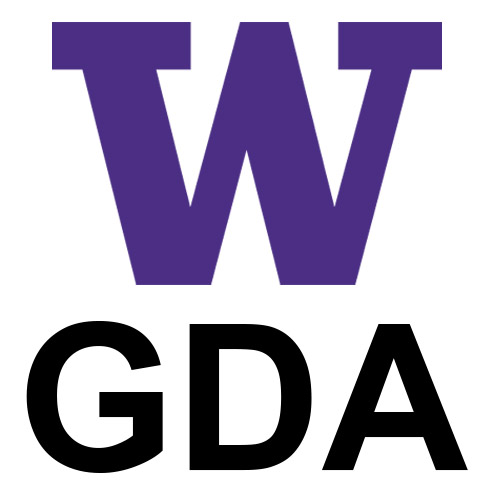Initial Setup for Instructor
Contents
Initial Setup for Instructor#
We use multiple platforms during this course, which required some prep before the quarter started.
Slack#
Create a new Slack workspace#
Go to https://slack.com/create
Recommend naming with course name and year:
Geospatial Data Analysis: W2020
In settings, scroll down to “Workspace Name & URL” and update to uwgda2020.slack.com
Optional: add a unique icon (useful if you are logged into many workspaces on Desktop app)
For a 10-week course with ~15 students, the free plan was sufficient. For larger classes, you might hit the 10K message limit during the quarter, in which case, some early messages will not longer be visible.
Set up workspace#
Add private
#adminchannel for TAs, IT staffAdd public
#it_helpchannel for students to get help with Jupyter issuesAdd public
#projectchannel for discussion of student projects (will see more activity later in quarter)Limit permissions on the
#generalchannel so only admins and specific users can postOn the
#generalchannel, post a new welcome message and create a quick-reference list of links to the various resources that will be used throughout the course (Jupyterhub url, Github Organization url, etc.).Pin this by clicking the three dots in upper right corner o fthe message and selecting “Pin to channel”.
Add a note that students can always find this list by clicking the Pin icon near top of the channel.
Review and modify additional workspace settings and configuration on the Slack website
Can use “Manage members” to set TAs or other course admin to “Workspace Admin” if desired.
Invite students#
Can do this with list of email addresses or click the “Get an invite link to share” and send to email list
Set default channels to join (add the new channels you created above)
Github#
If you don’t already have a Github account, create one: https://help.github.com/en/github/getting-started-with-github/signing-up-for-a-new-github-account
Github Organization#
Create a new Organization#
Click the + icon in upper right hand corner of Github landing page after logging in.
Choose the “Free” option (can sign up for edu account later)
Use a simple name for the Organization (e.g., “UW-GDA”)
Select “My personal account” so you can maintain control over the Organization
Invite members#
Note: students can join the organization when they accept the first assignment
Students will create accounts and send you their github usernames
Invite them to the organization (from the “People” tab)
Settings#
Base permissions -> None
Repostory creation -> enable Private
Create teams#
These will have different priveleges, and can be selectively assigned to repos in the Organization
Admin team: “wYYYY_admin”
Instructor team: “wYYYY_instructors”
Student team: “wYYYY_students”
Solutions repo#
Create a Private repo called “gda_course_YYYY_solutions”, where you will post solutions each week for student review
Go to “Settings” tab (upper right) and “Manage access”
Add teams:
instructor team with role “Write”
admin team with role “Maintain”
student team with role “Read”
Github Classroom#
Create new classroom (big green button)
Select your Github Organization
Give the classroom a descriptive name with year “Geospatial Data Analysis WYYYY”
Invite TAs (need to add as owner of Github Organization)
Send invitation to students to join
Skip integration with LMS (Canvas is listed, but UW-IT has not connected)
Upload list of student names, email or github usernames
Jupyterhub#
See Initial Setup section in general Jupyter Notes
ReviewNB#
Install in Github Organization
